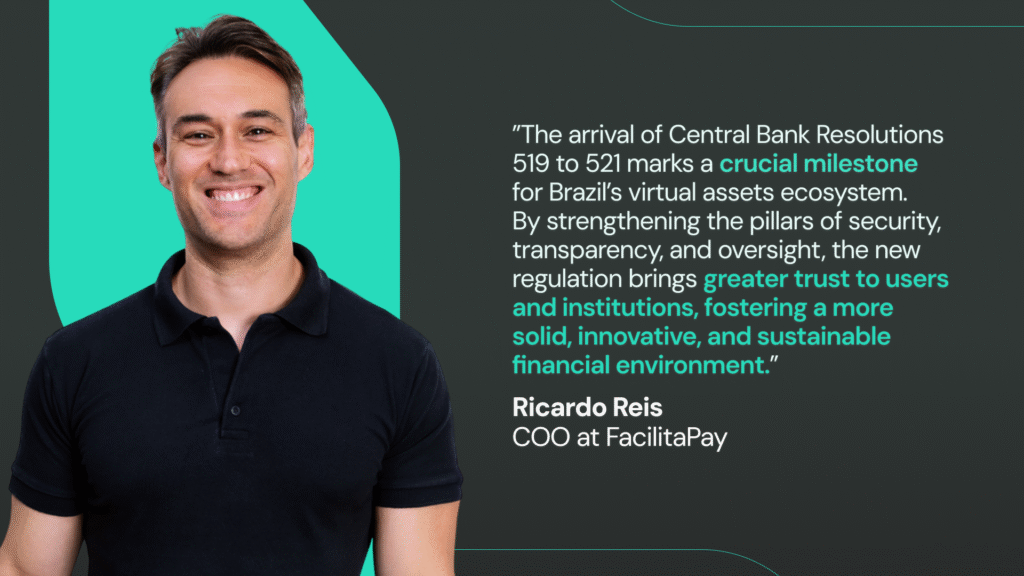Virtual assets are reshaping the global financial system, bringing efficiency, transparency, and innovation to how value is transferred and stored. As adoption grows, regulators are moving to establish clear rules that balance innovation with investor protection.
In Brazil, the Central Bank took a major step in that direction. On November 10, it introduced Resolutions BCB No. 519, 520, and 521, which lay out a comprehensive framework for Virtual Asset Service Provider Companies (SPSAVs) and define how these assets will be integrated into the country’s broader financial and foreign exchange systems.
This milestone reinforces Brazil’s position as a regional leader in virtual asset regulation, setting the foundation for a more transparent, secure, and reliable market environment.
SPSAVs and the new standards for virtual asset services
Resolution BCB No. 519 defines the governance and operational model for companies offering services related to virtual assets, from brokerage to custody, under the new SPSAV framework.
- Only Central Bank–authorized institutions may operate as SPSAVs;
- Companies must comply with capital, governance, and AML/CFT requirements;
- Platforms must adopt mechanisms to prevent market abuse, price manipulation, and custody failures;
- The regulation becomes effective on February 2, 2026, allowing time for market adaptation;
By creating a clear structure for authorization and supervision, the Central Bank seeks to strengthen trust, promote responsible innovation, and align Brazil with international standards for virtual asset oversight.

Virtual assets integrated into FX and capital markets
Resolutions BCB No. 520 and 521 extend the scope of regulation by integrating virtual asset transactions into Brazil’s foreign exchange and international capital markets.
Under the new framework:
- Payments, transfers, and remittances using virtual assets are now classified as foreign exchange operations;
- Virtual asset providers must identify all counterparties, including self-custodied wallets;
- Reporting to the Central Bank will be mandatory starting in May 2026;
- Virtual assets are recognized within foreign direct investment (FDI), external credit, and Brazilian capital abroad transactions;
This integration aims to ensure transparency, prevent financial crimes, and foster interoperability between digital assets and traditional financial systems, a crucial step for Brazil’s growing digital economy.
The balance between innovation and regulation
The new framework represents a significant leap toward a mature, well-regulated market for virtual assets. It promotes accountability and market integrity, setting a precedent for other jurisdictions in Latin America.
However, some points deserve careful observation. The attempt to treat stablecoin transactions similarly to traditional Swift operations may limit the efficiency that blockchain-based rails are designed to deliver. Additionally, such classification could pave the way for an IOF tax, potentially making these operations more expensive and less competitive for businesses leveraging virtual assets in cross-border flows.
At FacilitaPay, we view regulation not as an obstacle but as a catalyst for progress. The key is balance, ensuring that innovation can flourish within a secure and transparent environment. As Brazil advances in defining the rules for virtual assets, the next challenge will be to sustain that equilibrium between compliance, efficiency, and innovation, shaping the future of digital finance in the region.
Talk to our team of experts to learn how our solutions can help your business navigate this new regulatory landscape.
Source: Central Bank of Brazil








